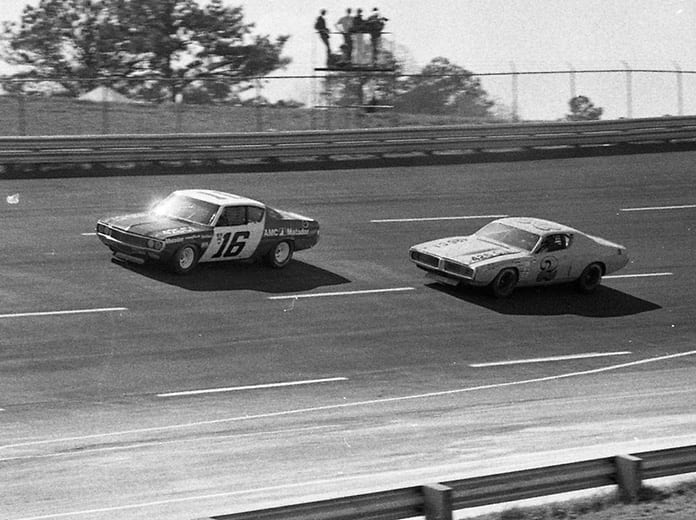EDITOR’S NOTE: This story first appeared in SPEED SPORT Magazine in 2016.
Throughout NASCAR’s history, the foundation of stock car racing has always been the cars and the drivers who bravely wheel them.
From day one, automakers based in Detroit have looked to on-track performance as a way promote and sell their products.
By the time NASCAR held its inaugural Strictly Stock race on June 19, 1949, several fledgling car designers enjoyed seeing their paper sketches of car designs become reality. Even for those small, dream-filled ventures, NASCAR was a proving ground to determine the fastest, most reliable cars.
In that inaugural 150-mile race on the three-quarter-mile dirt track at the Charlotte (N.C.) Fairgrounds, a field of 33 Fords, Oldsmobiles, Hudsons, Lincolns, Kaisers, Chryslers, Buicks, Cadillacs and Mercurys took the green flag. Kansas native Jim Roper collected NASCAR’s first premier series victory in a black 1949 Lincoln.
All of those cars were driven to the track and given pre-race preparation that consised of the taping of headlights, a change of oil, the installation of a homemade seat belt and the use of leather belts to ensure the doors wouldn’t fly open.
Many early car owners placed their faith in the well-established brands. It was all about what they saw their parents drive and the stories of dependability they had heard all their lives.
“Daddy (three-time NASCAR champion Lee Petty) grew up as a Chrysler man,” said Richard Petty, a seven-time NASCAR Cup Series champion. “He grew up as a Chrysler man, while everyone else liked Fords. I think he just wanted to be different so he messed around with the Chrysler cars. It was just an automatic thing to run Chrysler stuff when we started racing. The Plymouth was the cheapest, lightest car there was and only had 97 horsepower. But he knew the car would make the race. That was what it was all about back then.”
There were several cars raced by those who elected to venture into uncharted territory.
For instance, NASCAR’s first road course event was won by Al Keller on June 13, 1954, on the runways and tarmac of the Linden (N.J.) Airport. Keller wheeled a Jaguar owned by famed orchestra leader Paul Whiteman, a close friend of NASCAR founder Bill France.
Another of the favorites was the Hudson Hornet, a car that proved to be a bit ahead of its time. An early NASCAR star saw its potential and offered suggestions to engineers to make it go fast, handle well and win races.
The Hornet was produced by the Hudson Motor Car Co. between 1951 and ’54. From there, the American Motors Corp. marketed Hudsons from 1955 to ’57.
Hudson was the first manufacturer to offer factory support to NASCAR drivers and teams. The car is credited with 66 wins in 108 starts from 1952 to 1954. Tim Flock won NASCAR’s premier championship in 1952, while Marshall Teague won 12 of 13 AAA events in the car that year.
Click below to keep reading.
